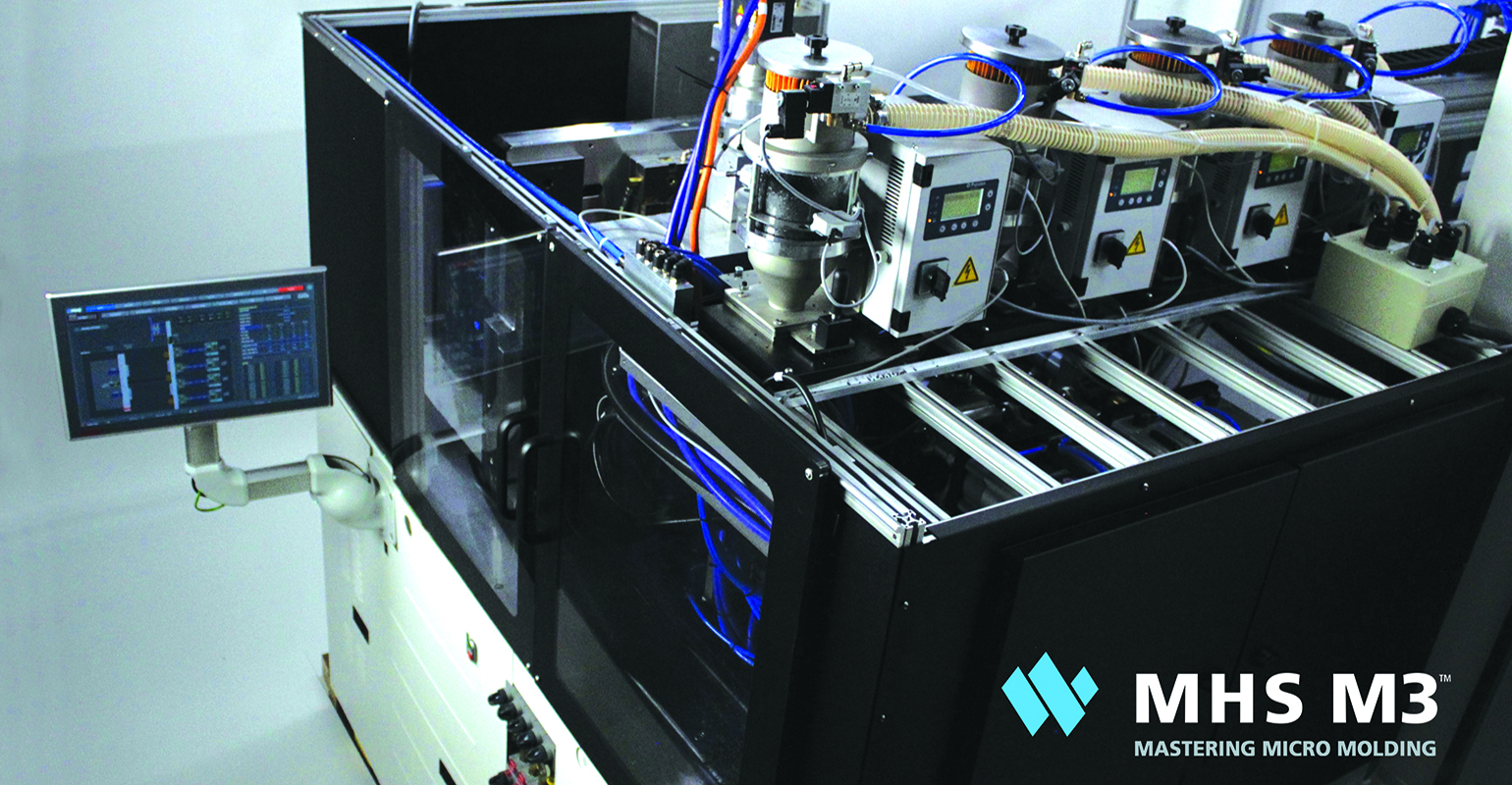
Medical Micro-Molding Technique Slashes Production Time and Lowers Costs

A new patent-protected method and technology for micro molding medical parts, created by Westfall Technik, eliminates cold runners and increases the allowable residence time of material in the machine. The benefits include slashed production time, lower per-piece cost, and reduced material usage.
Vijay Kudchadkar, Director of Advanced Engineering for Westfall Technik, will detail the company’s new technology — developed over the past 10 years — in a June 14 presentation at IM Engineering South in Charlotte, NC.
Using newly designed hot runners and designing a new machine around the process, Westfall Technik keeps resins under pressures ranging from 4,000 to 15,000 PSI to prevent material degradation during processing. The company’s new M3-D32 is a 32-cavity micro-molding machine featuring 32 valve-gated hot runner nozzles, eight injection plungers, four plasticating barrels, four hoppers, and four dryers — meaning multiple resins with similar processing temperatures can be processed simultaneously.
“In any other conventional hot runner, the material will degrade simply because of residence time,” Kudchadkar explained. “In micro molding, the part volume is so small that if you try to do a high-cavitation micro mold without cold runners and try to use conventional hot runners — even if you go with a polyolefin — the residence time is going to be so large that the material is going to degrade.”
By keeping material under pressure, “we can more than triple or quadruple residence time,” Kudchadkar said. Noting that acetals, for instance, will degrade in five to 10 minutes, “we had acetal in our system for 55 minutes.” With new acetals, he added, “you’ll smell the degradation, see the degradation — you’ll know that it’s degrading. At MD&M West in Anaheim CA, in April, the company demonstrated its process by molding 20-milligram parts with acetal.
Eliminating cold runners in medical micro molding reduces cycle times to about one-third of the original processing window, while also reducing the price of each part.
Cold runners often dictate processing time, Kudchadkar said. “The part may solidify in one or two seconds, and the rest of the cycle time — five or 10 seconds — is simply waiting for that cold runner to solidify.” Getting rid of the cold runner means a 15-second process could be reduced to five seconds. And, reducing the use of that cold runner material adds a clear sustainability benefit to the technology’s value proposition.
Piece price in micro molding is also dictated by the cost of the cold runner, Kudchadkar said. In medical applications, cold runners cannot be reused — and that waste is added to the piece price. Given the cost of bio resins — which range from $5,000 to $20,000 a pound — cost savings are particularly imperative in these applications, which include components for hearing aids, diabetes monitors, and inhalers.
IM Engineering South will run concurrently with SPE’s ANTEC at the Charlotte Convention Center on June 14 to 16 as a package of six shows billed as the Southeast’s largest design and manufacturing event. Those six shows are MD&M South, Plastec South, Automation Technology Expo, Design & Manufacturing, SouthPack and Powder & Bulk Solids South.
Kudchadkar will make his presentation at the Medtech Theater, booth 1638, at 3 p.m. on June 14.

Leave a Reply